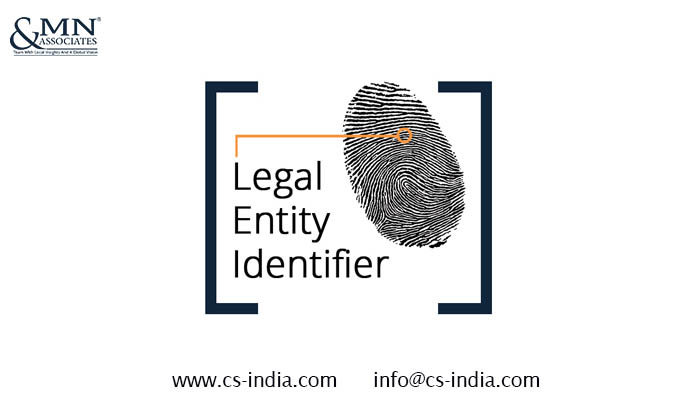
Legal Entity Identifier (LEI): Imparting thread access to financial information of entities.
Due to the multiplicity of regulations and alterations in the nature of transactions, different types of entities in the market have to deal with different regulatory requirements and financial transactions. Also, in the society, a distinct number of entities operates in distinct transactions at different institutional levels. For effective reporting of all such transactions or transactions of particular nature, the authorities need a common access point.
For instance, a regulator wants to know some specific information about a particular transaction of any association or its institutional borrowing, investments made, financier of entity etc, for this he has to reach multiple institutions providing data in different aspects which will be later compiled or altered by the regulator to finally get what he needs.
Seeking to the need for ease in access of all financial transactions related to specific legal entities, the concept of Legal Entity Identifier (LEI) came into light.
How Legal Entity Identifier LEI will bring evolution in the scrutiny of information
LEI (Legal Entity Identifier) system in India was first introduced with notification of RBI for securing access of financial transactions of eligible participants dealing in Over the Counter (OTC) Derivative markets. Thereafter, all large corporate borrowers and non-participants of derivative markets were also bought into the LEI system.
LEI is a 20 Character Unique Identity Code is broken in – 4 numeric digits of entity identification (LOU, LEIL etc), 5-6th digit set to reversed digits, 12 alphanumeric digits and 2 approved digits under ISO, which is assigned to entities recognised as legal entities who are parties to financial transactions for providing common access to information of their financial areas relating to banking, credit rating, securities etc. to authorities.
Timeline for Entities to obtain LEI Code as prescribed by RBI
Reserve Bank issuing timely notifications in lieu of issue of LEI code and has mandated for all eligible participants in OTC derivative markets, large corporate borrowers and non-participants to obtain LEI before the below-specified timeline :
| Timeline for obtaining LEI Code by entities dealing in Derivative Markets (Based on Net Worth ) | ||
| Entities | Timeline | |
| Regulated under RBI/SEBI/IRDA/PFRDA and with Net worth above Rs 10000 million | 1, August ,2017 | |
| Corporates with Net worth above Rs 2000 million and below Rs 10000 million | 1, October 2017 | |
| Net worth between 700 million and 2000 million | 1, December 2017 | |
| Net worth between 700 million and below | 31st March 2018 | |
| Timeline for large corporate borrowers based on the exposure of funds (fund based and non-fund based credit limit ) | ||
| Credit Exposure of funds | Timeline | |
| Above Rs 10000 crore | 31st March 2018 | |
| Between 500 cr and 1000 cr. | 30th June 2018 | |
| Between 100 cr and 500 cr. | 31st March 2019 | |
| Between 50 cr and 100 cr. | 31st December 2019 | |
| Between 5 cr. and 50 cr.
|
To be notified.
|
|
| Timeline for Non-participants of Derivative Markets | ||
| Based on Net worth of entities (as per section 2(57 ) of Companies Act, 2013 | Timeline | |
|
Above 10000 million |
30th April 2019
|
|
| Between 2000 million and 10000 million | 31st August 2019 | |
| Up to 2000 million | 31st March 2020 | |
- LEI is not applicable to individuals
- LEI will help a user of information to get all information related to financial transactions by an entity in a standardized format.
- Entities on obtaining LEI after the above prescribed due dates shall only be able to undertake transactions in financial markets.
- Non-resident entities shall also have to obtain LEI code for undertaking transactions in forex or financial markets.
- Any outsider can view transaction made with LEI by any entity on the official web portal of LEI which is free of charge (www.ccilindia-lei.co.in/).
Applying LEI in India
In India, entities can apply for LEI code from the Legal Entity Identifier India LTD a subsidiary corporation of the Clearing Corporation of India (Recognised by RBI ).
To apply for LEI, the entity has to follow the below procedure:
Step 1: Register and Obtain login credentials on the official web portal of LEI (https://www.ccilindia-lei.co.in/USR_LOGIN_REGISTER.aspx)
Step 2: File in the required details including PAN, Registered Address, Parent entity, Industry type, etc.
Step 3: Download the required forms and documents sent by LEI department to the email of the applicant.
Step 4: Fill in the details in the documents with due attestations and send the same to their registered address.
Legal Entity Identifier India Limited,
CCIL Bhawan, Third Floor,
S.K. Bole Road, Dada (West), Mumbai-400028
Step 5: Make payment as prescribed
The department after proper verification of documents will grant an LEI Code to the entity. The entity can even renew the code on expiry of the allotted period.
Seeking professionals for RBI compliances for your company?
Get expert advisory services on FEMA and RBI Compliances with info@cs-india.com
